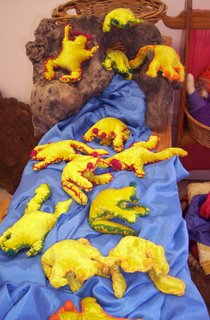Constructivist views of learning emphasise the active role of the learner in building understanding, that is; effective learning occurs when individuals construct their own understandings. Rather than feeding students information for them to memorize and regurgitate to pass an exam from the authoritative, all-knowing position as the teacher, a constructivist approach is a mutual discovery. Under the teachers guidance students draw on their own experiences and understandings to further their knowledge on a subject. A process of scaffolding guides the student from what he currently knows to what he is able to know.
 Jean Piaget 1896 – 1980
Jean Piaget 1896 – 1980Piaget, a Swiss biologist and psychologist came to study “how children come to know things”. Through this study Piaget developed his theory identifying four stages of child development.
1 Sensorimotor stage (birth - 2 years old)--The child, through physical interaction with his or her environment, builds a set of concepts about reality and how it works. This is the stage where a child does not know that physical objects remain in existence even when out of sight (object permanence).
2 Preoperational stage (ages 2-7)--The child is not yet able to conceptualize abstractly and needs concrete physical situations.
3 Concrete operations (ages 7-11)--As physical experience accumulates, the child starts to conceptualize, creating logical structures that explain his or her physical experiences. Abstract problem solving is also possible at this stage. For example, arithmetic equations can be solved with numbers, not just with objects.
4 Formal operations (beginning at ages 11-15)--By this point, the child's cognitive structures are like those of an adult and include conceptual reasoning.
Piaget’s study led him to believe that children construct their own understanding through interaction with their environment.
 Lev Vygotski 1896 – 1936
Lev Vygotski 1896 – 1936For Vygotsky, a contempory of Piaget, the students learning process is not a solitary exploration by a child of the environment, but rather the unfolding of cognitive understandings of social beings within social contexts. That the social system in which children develop is crucial to their learning.
Children learn through socially organized instruction with teachers, parents and peers.
Vygotsky developed the Zone of Proximal Development. This is described as each persons range of potential for learning, or; the distance between the actual developmental level of a chills as determined by independent problem solving and the level of potential development as determined through problem solving under adult guidance or in collaboration with more capable peers.
 Jerome Bruner
Jerome BrunerJerome Bruner advocates that if students were allowed to pursue concepts on their own they would gain a better understanding. The teacher would provide guidance, organizing the curriculum in a spiral manner so the students are continuously building upon what they have already learnt. The intelligent mind creates from experience.
Bruner’s theory of child development. As children develop they master each of these increasingly more complex modes:
1 Enactive representation - this is the earliest stage present from infancy where a child's world is represented through objects in terms of their immediate sensation of them. For example their muscular and motor responses or ways they manipulate the environment.
2 Iconic representation - develops at around two to three years old and involves the use of mental images that stand for certain objects or events; imagery that is relatively free of action.
3 Symbolic representation - develops around seven years old and is the ability to transform action and image into a symbolic system to encode knowledge. Primarily these symbols are language and mathematical notation.




